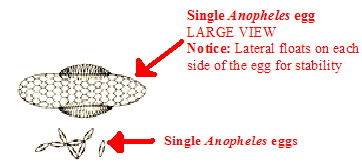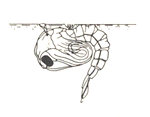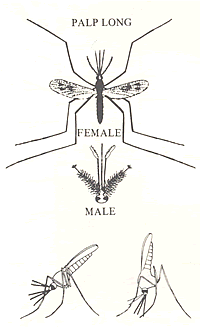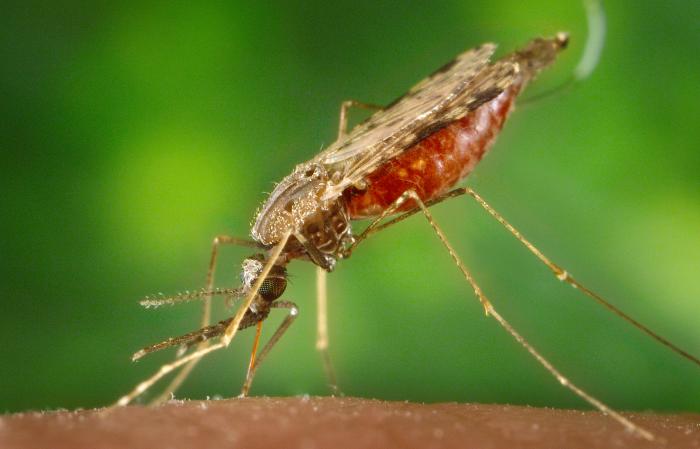The way it is.........
Four stages in life cycle-
Egg, larva, pupa and imago (adult insect)
To complete the lifecycle of Anopheles earlei it takes about a month from egg to death.
50-200 eggs are laid by an adult female each time she lays eggs.
Eggs are laid—DIRECTLY ON WATER—preferably cold water, one at a time, NOT ON AN EGG RAFT! This is characteristic of Anopheles mosquitoes, most other mosquitoes lay eggs on a raft or float.
The eggs are a light grey color with a dark spot on each end, and a dark band at end of each lateral float. Each float has 17-21 float ridges.
The eggs are NOT RESISTANT TO DRYING so therefore they HATCH within 2-3 DAYS, if temperatures are cooler it could be 2-3 weeks before hatching.
Mosquito larvae and pupae are food sources for many fish!
also known as "Wrigglers"
Larvae develop in four stages, at each stage the exoskeleton is lost in a molting process, so further growth can occur.
Larvae do no have a respiratory siphon and
instead breathe through spiracles
on the 8th abdominal segment! For this reason the larvae position
themselves
parallel to the surface of the water and MUST surface frequently
to breathe! This is characteristic of Anopheles
mosquitoes. The inner anterior clypeal hairs (136
total) on the head of A. earlei is another
identifying feature. There are 2-6 forked branches of the
hair on the anterior clypeal hairs, this feature is not present in other species.
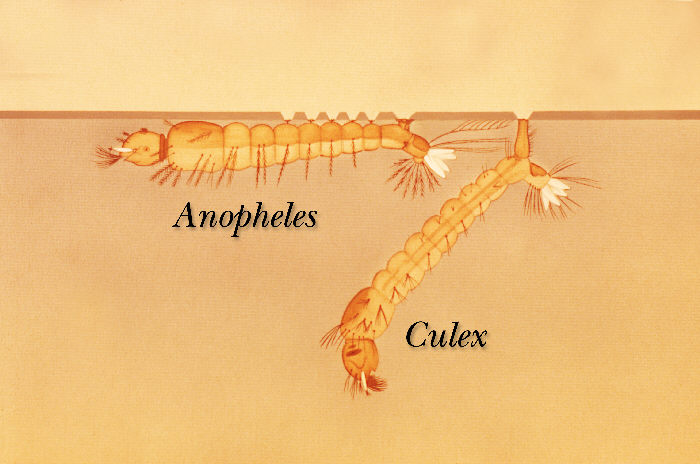
The larvae dive below surface only when disturbed
-propulsion with mouth brushes
After the 4th molt-Larvae become.............
also known as "Tumblers"
The head and thorax of the pupae are merged into a cephalothorax and abdomen curves underneath as illustrated in the picture above. The pupae float at the surface and breath through respiratory trumpets (two small tubes) on the cephalothorax.
-Pupae do not eat! This part of the life cylce is short, only days long.
-The pupa forms a pupal case around itself and undergoes holometabolous
metamorphosis into an......
A. earlei females become active at dusk when there are cooler temperatures!
3 sections: head
Adults can live up to a month or more in captivity but typically only one to two weeks in nature. Except in the winter, females will exist in a nulliparsin form in basements, caves, and other dark places. Then in the spring they will come out to take a blood meal and reproduce. Adults are the form that reproduces--for more information view the Reproduction section.
To return to multipleorganisms.net click here!
